The Chassidic Attire
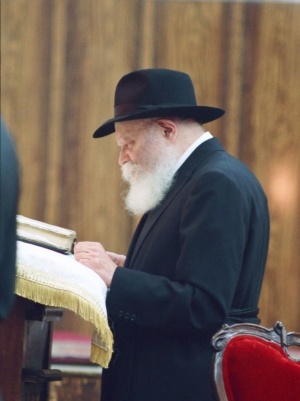
The Chassidic attire customary among Chabad chassidim differs from that of Polish chassidim and is more similar to what is customary in Lithuanian communities. It consists of a short suit on weekdays, and a long one on Shabbos for married men, a "kneitch" hat, and for married men also a gartel.
Over the years, less emphasis has been placed in Chabad chassidus on maintaining a fixed style of dress, while the main investment was on the inner quality of the chassid and his conduct. Nevertheless, there was caution not to sink into and be preoccupied with following fashion.
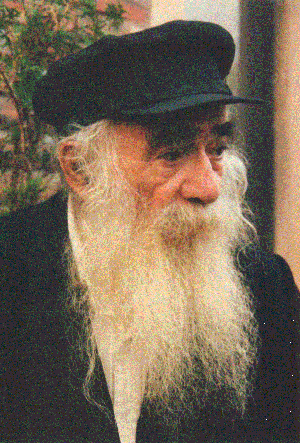
Avoiding Wearing Fashionable Clothing[edit | edit source]
Before the wedding of Reb Nachum - the grandson of the Alter Rebbe, the Alter Rebbe approached him and asked if he would agree to tear the beautiful part of the fur on the lapel of the silk and leather coat in which he was supposed to enter the chuppah. Reb Nachum said he did not agree and did not want to do so, even when the Alter Rebbe offered to learn with him in exchange. But the Alter Rebbe told him that if he agreed, he would merit to be "with me in my domain" in the World to Come. Reb Nachum wanted to agree, but still asked whether he should do this because he truly wanted to replace the expensive silk with a patch, or do it with "kabbalas ol" (acceptance of the yoke) because the Alter Rebbe commanded him to do so. The Alter Rebbe said that he should truly want it with the truth of the "yechidah," and Reb Nachum was silent - because he truly did not want to sew a patch on the coat. On the wedding day, Reb Nachum went to receive a blessing from the Alter Rebbe before the chuppah, and then the Alter Rebbe tore off part of the collar and promised him longevity in return. In his later years, Reb Nachum established his residence in Haditch - near the gravesite of the Alter Rebbe - in order to atone for not wanting in his youth to tear the fur and sew the patch sincerely.
The Rebbe told this story several times and explained that in every generation there is the "klipah" and the trials that are aroused by it, and the Alter Rebbe saw that in this generation the "klipah" and desire for beautiful, magnificent clothing was growing stronger. Therefore, the Alter Rebbe wanted to "break" and nullify this klipah by tearing the beautiful part of the elegant coat, to the extent that he promised in return "with me in my domain."
It is told about a chassid of the Tzemach Tzedek who was a merchant. His profession required him to travel to various cities throughout Europe, and therefore he changed his attire from chassidic garb to modern dress that was more suitable for merchants. However, every time he came to Lubavitch to see the Rebbe Tzemach Tzedek, he would arrive in chassidic dress. Once he changed his habit and did not change his clothes. When he entered for yechidus, he told the Rebbe Tzemach Tzedek that he didn't want to be a hypocrite - wearing chassidic clothes when he comes to Lubavitch while in other places he goes in merchant clothes. The Tzemach Tzedek answered that chassid-merchant that initially he thought that his true place was in Lubavitch and therefore he comes to Lubavitch in chassidic dress while in the rest of the world he "pretends" and wears merchant clothes, but now...
Similarly, in the days of the Rebbe Maharash, a fashion began to spread where in addition to a pocket in the lower part of the suit, a pocket was also sewn in the upper part, in which a handkerchief was tucked. When the Rebbe Maharash noticed one of the chassidim who was a merchant walking in such a suit, the Rebbe asked him why he needed to walk in a suit designed according to fashion trends, and the chassid asked in response what the difference was if there was also a pocket in the upper part of the suit and what the concern was. The Rebbe Maharash said that the difference is great, because there is a common saying that "a chassid - up to the pocket...," and therefore if the pocket is at the bottom - as it had been until then - there is a large part of the chassid, but if the pocket is at the top - only a small part of the chassid remains...
The Rebbe Rashab expressed that "when people come to me for yechidus in a 'kurtzeh rekel' (short jacket), it is a 'stab' for me."
There is also a story about a chassidic town from the days of the Tzemach Tzedek that dismissed a shochet from his position because he wore galoshes, because although there is no prohibition in wearing galoshes, it simply shows the inner nature of the person. However, from this story the Rebbe proved that even things that were not accepted in the past and even aroused opposition - in our generation it is possible that some things are not problematic to use today, as we see great chassidim today who walk with galoshes.
It is told that when the Rebbe was asked which model to choose for his reading glasses, he replied "not from this fashion" (or "not from the latest fashion").
The Rebbe wrote that the chassidic dress itself protects the wearer from associating and meeting with undesirable figures, and expressed satisfaction when he heard about a shliach who was careful not to open his door facing the street when he was not wearing a hat and suit.
Regarding changing clothes to chassidic dress when family members object to it, the Rebbe wrote that one should not rush to decide on the matter, and one should precede it with an internal change, and only after the decision is solid in a way that will ensure that even if there are mockers and pressures the person will not go back on his decision - then one can change the attire.
Dress of Polish Chassidim[edit | edit source]
The Rebbe Rashab spoke about the virtue of the externality of Poland, which is the matter of clothing, saying: "I am distressed and worried that we do not live in Poland" and this is due to the "Polish externality."
The Rebbe Rayatz also greatly praised the garments of Polish chassidim who are very recognizable in their Jewish garments, and said that he wished he could also institute these garments in Chabad.

To Polish chassidim who became close to Chabad chassidus who wanted to change their clothes to the Chabad style of dress, the Rebbe instructed them to continue wearing those garments.
You'd like me to translate the document without any caps and specifically use "Kneitch" instead of other variants. I'll retranslate the document with these specifications.
Hat[edit | edit source]
In the early years, chabad chassidim would wear a round hat without brims called a kazirak, but later, throughout most of chabad chassidism's existence, the custom of chassidim in Russia was to wear a kasket - a hat with a visor (see example in picture 1). Following the decisions of the 'clothing decree', which required all Jews to wear uniform clothing - including a hat with front brims, the kasket. When the Tzemach Tzedek heard about this, he responded that this decree came from the 'klipah' (negative spiritual forces), which tries to prevent the concept of "Lift up your eyes on high and see who created all these" - meaning, looking at the heavens and thereby reaching contemplation of Hashem's greatness and majesty. When the Tzemach Tzedek's chassidim heard this, they cleverly fulfilled the decree by wearing the kasket with the visor facing backward - toward the back of the neck.
In the tradition of the Rebbeim, the Rebbe Rashab and the Rebbe Rayatz would wear a silk hat. Until the passing of the Rebbe Rashab, the crease in the Rebbe Rayatz's hat was in a triangular shape as was customary among merchants at that time, and afterward he changed it to a circular shape as was customary among elder rabbis of that period.
Shtreimel[edit | edit source]
Expanded entry - Shtreimel
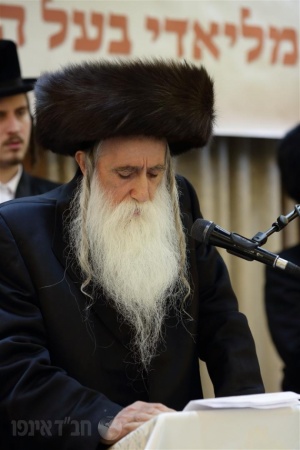
Shtreimel (in Hebrew: mezanevet, meaning: garment made from an animal's tail) is a hat made from animal tails (usually fox), considered chassidic attire and regarded as Shabbos clothing worn only on Shabbos, holidays, and simchas (see example in picture 8).
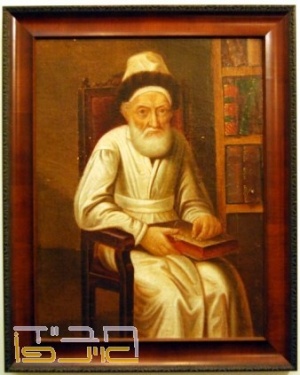
Similar to it is the kolpik, which serves as an equivalent to the shtreimel, and is worn on special weekdays, such as Rosh Chodesh, fast days, and chassidic dates by the Rebbe, and on Shabbos and holidays by the Rebbe's sons and grandsons who are not yet married.
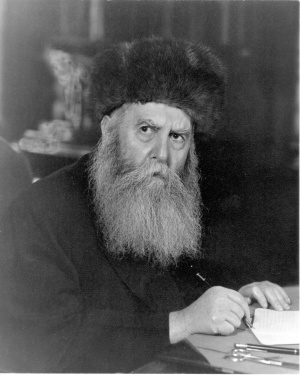
Equivalent to the shtreimel and kolpik is the spodik, which is wider than the kolpik and lighter in color than both the kolpik and shtreimel (see example in picture 7), and is customary instead of the shtreimel in chassidic courts originating from Poland such as Ger, Aleksander, Sochatchov, and others. It is worn in these places instead of the shtreimel as part of a compromise made by the chassidim of the "Chiddushei Harim" of Ger with the Polish government during the "clothing decree" period, to change the Jewish attire (short pants and shtreimel) to the Cossack attire which consisted of a spodik, "Cossack socks," and a beard.
The origin of the shtreimel is unclear, but one opinion is that it began to be worn by the disciples of the Baal Shem Tov, who wanted to symbolize through it the elevation of the divine sparks even from the lowest thing - the tail of an impure animal.
The chabad custom[edit | edit source]
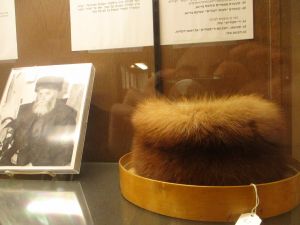
chabad's custom was always like other chassidic courts. Thus, in the painting of the Tzemach Tzedek (see picture 6), he appears dressed in Shabbos clothes and wearing a shtreimel inherited from the Alter Rebbe. It is told about the Mitteler Rebbe that every Yom Kippur he would sit between Mincha and Neilah (and according to another version, between Mussaf and Neilah), and was so deep in thought that sweat would drip from the upper edge of the shtreimel he wore. The Rebbe Rashab would tell this story and note the greatness of the Mitteler Rebbe's mental exertion, to the extent that it's impossible to estimate what was accomplished by him during that time.
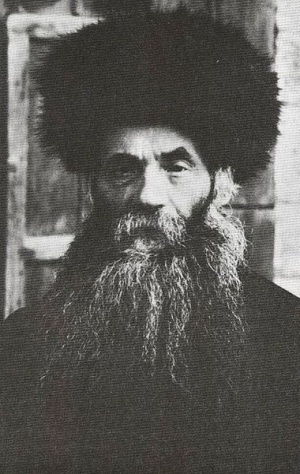
The Rebbe Rayatz and the Rebbe Rashab were careful to wear the shtreimel only in Lubavitch, following the instruction of the Rebbe Maharash to the Rebbe Rashab before his wedding in Avrutch to be careful and wear the shtreimel only in Lubavitch. So since the Rebbe Rashab and the Rebbe Rayatz left Lubavitch, they did not wear a shtreimel again, until the Shabbos before the Rebbe's wedding, when the Rebbe Rayatz returned to wearing the Rebbe Rashab's shtreimel. The type of shtreimel that was worn by the Rebbe Rayatz was a kolpik.
It is told that in the Alter Rebbe's minyan, every person called to the Torah had to wear a shtreimel during his aliyah, and those who didn't have a shtreimel would receive one for this purpose from the gabbai. Once, when the gabbai couldn't find the shtreimel, he gave the Alter Rebbe's shtreimel to the person called up. When the Alter Rebbe came to put on his hat at the end of the prayer, he asked the gabbai if someone had worn the shtreimel. When the gabbai told him what happened, the Alter Rebbe asked to call the hatter, and requested him to undo all the stitches in the shtreimel so that it would come apart, and then to sew it back together. When the work was done, the hatter hung the shtreimel to dry over the fire and forgot about it all night. When he discovered in the morning that the shtreimel had burned and came to inform the Alter Rebbe, before he began to speak about it, the Alter Rebbe asked him if the hat had burned, and when the hatter answered that this had happened, the Alter Rebbe told him that it was not terrible.
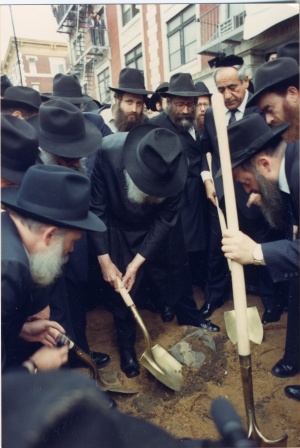
The Rebbe did not wear a shtreimel, and there are two contradictory explanations for this: The first opinion holds that the Rebbe wanted to wear a shtreimel - but only the Rebbe Rayatz's shtreimel, but since Chana Gurary still supported her husband - the Rashag - to be the Rebbe at that time, she did not give it to the Rebbe, and so the situation remained that the Rebbe did not wear a shtreimel. The second opinion is that the Rebbe did not want to wear a shtreimel at all, claiming that "the shtreimel is Rebbishe attire," and that this was another aspect of the Rebbe's relationship with the Rebbe Rayatz as continuing the leadership even after his passing, despite Rabbi Ephraim Yolles' urging that he begin to wear a shtreimel.
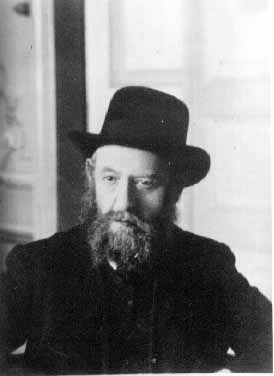
The Rebbe of Chortkov entered for a yechidus with the Rebbe, and after receiving permission to make a suggestion to the Rebbe, said that if the Rebbe would 'remove' his hat and wear a shtreimel, thousands of chassidim would join his court. The Rebbe began to laugh loudly and asked him what kind of Jews would become his chassidim as a result of the shtreimel, who need specifically a shtreimel and not a hat. The chassid answered that these would be Jews of all types, and began to list many types of chassidic groups, saying that those Jews would not be comfortable with having to go on Shabbos with a hat and not with a shtreimel. The Rebbe answered him that if he meant those Jews, "what's wrong with the chassidic courts they are in that they need to be my chassidim specifically? What I want to know is how many kibbutzniks will become my chassidim as a result of me removing the hat and wearing a shtreimel!"
The custom of chabad chassidim is that the seller of aliyos for the Tishrei holidays wears a shtreimel at that time, and thereby becomes a "shtreimel Jew" (see example in picture number 9).
Kneitch hat[edit | edit source]
Expanded entry - Kneitch Hat
Today most chabad chassidim customarily wear a folded hat called a "kneitch hat" named after the "kneitch" - the "fold" in Yiddish. This hat is built with inward folds ("eyes") on both sides, and along the dome of the hat there is a crease along its entire length.
Some say that wearing this hat was first seen with the Rebbe Maharash, who when traveling would wear elegant merchants' clothes so that he would not be identified. Later, the Rebbe Rayatz also wore it in his youth, and there is even a picture of this (see picture 2), although they wore the hat with the brim turned upward.
The chassidim's practice of wearing a kneitch hat began when the Rebbe started wearing a hat with the front brim pulled down sharply, and the central crease in the dome of the hat deeper and wider, with three sides, which received the nickname "chabad triangle" (see example in picture 3). When the Rebbe was asked why the brim of the hat was pulled forward in an extreme way that hid his eyes, the Rebbe answered that "for me it's enough to look within my four cubits..."
Wearing the hat as a 'second covering'[edit | edit source]
Expanded entry - Second covering
chassidim customarily wear the hat mainly during prayer, as a 'second covering' in addition to the yarmulke. The source of this is apparently in the words of the Gemara that wrote that under the Kohen Gadol's mitre was a wool cap, and in the words of the Tzemach Tzedek in his book "Piskei Dinim L'Tzemach Tzedek" who wrote that the custom of the early chassidim was to cover the head, in addition to the yarmulke on their head, with an additional covering. The Bach, the Turei Zahav, and the Mishnah Berurah also wrote that it is proper to practice that in addition to the tallis, one should not remove the hat, because it adds to the fear of Heaven. Another reason is that since during prayer one should stand in a dignified manner, as is appropriate to stand before a king or an important person - one should also wear a hat over the yarmulke, because it is not respectful to stand before an important person with only a yarmulke on one's head.
It is explained in chassidus that the two coverings are aspects of two encompassing levels from the aspects of Chayah and Yechidah, and by connecting the encompassing levels of the soul with physical encompassing garments (yarmulke and hat), there is an addition to the drawing down and revelation of the two encompassing levels of the soul. The Rebbe Rayatz used to sleep with two yarmulkes (and it is possible that he practiced this not only during sleep).
Sirtuk - Kappota[edit | edit source]
Expanded article - Sirtuk
Unlike the Chassidic rekel - which is a long suit extending past the knee by approximately 10 centimeters, and the kapota worn on Shabbat, the sirtuk is the long coat worn by Chabad chassidim on Shabbat and holidays. The sirtuk is shorter than the regular kapota due to the clothing decree, when it was also decreed that Jews must shorten their garments.
Chabad chassidim began wearing the sirtuk from the year 5604 (1844) following the clothing decree issued by Czar Nicholas, but this attire belonged only to chassidim. Our Rebbes, from the period of the Alter Rebbe's leadership until the period of the Maharash's leadership, continued to wear the long and wide kapota on weekdays, and a white silk kapota on Shabbat and holidays. However, since the Rebbe Maharash assumed leadership, he too began to dress like the chassidim, and changed his garments from kapota to sirtuk, due to his health condition that forced him to wander between different towns. He did not wish to be seen as a Rebbe, so he dressed like one of the merchants.
Until the Rebbe's leadership, chassidim used to wear a cloth sirtuk, and a silk sirtuk was worn only by Rebbes, who wore it on Shabbat and holidays. But following the Rebbe's talk, in which he said that the cloth sirtuk should be replaced with a silk sirtuk, many Chabad chassidim began to wear silk sirtuks.
Today, there are chassidim who wear a sirtuk all week, even on weekdays and not just on Shabbat and holidays, due to the Rebbe's practice since the year 5750 (1990) of wearing Shabbat garments (silk sirtuk) throughout the week.
Avnet - Gartel[edit | edit source]
Expanded article - Avnet

The avnet (also called gartel) is an item of clothing that chassidim customarily tie around their garments at elbow height during prayer, with the purpose of separating between the upper part of the body and the lower part. The origin of this custom is from the priestly garments, which the kohanim would wear during their service in the Beit HaMikdash. The Rebbe was particular that the length of both ends of the gartel should reach the ends of the sirtuk.
The Rebbe Rashab instructed the Temimim in Yeshivas Tomchei Temimim Lubavitch to remove the gartel. However, the Rebbe instructed that when entering for yechidus (private audience), one should wear a gartel, but it is not required to be over the suit and can also be worn underneath it (and this is the custom).
Regarding the custom to wear two avnets - the Rebbe wrote that this is not a Chabad custom. But according to tradition, the Rebbe himself did practice this.
Shirt[edit | edit source]
In the years between 5711-5760 (1951-2000), yeshiva students and chassidim in Eretz Yisrael were not particular about wearing a white shirt on weekdays, but instead wore colored button-up shirts. In later years, the custom began to become established among chassidim to wear a white button-up shirt even on weekdays. Some Chabad chassidim also have the custom not to tuck the shirt into the pants, and some have explained this based on the Rebbe's custom, following the Arizal's words that one should not go with exposed tzitzit, yet on the other hand, one should not tuck the tzitzit into the pants, but they should hang down.
The Rebbe wears a shirt with short sleeves even in winter.
Buttoning[edit | edit source]
The custom of chassidim is to button right over left according to the Zohar, so that the right side (equated in Kabbalah to the sefirah of Chesed/kindness) should dominate over the left side (equated to the sefirah of Gevurah/strength). Some give an additional reason that in the past, men would walk with a sword in their right hand, and it was difficult to open a button with the left hand when it was buttoned left over right. It is told in the name of R' Michael Bliner that when chassidim would unintentionally see a priest walking in the street, they would open their pants button, which was sewn left over right, since when encountering a priest, the attribute of Gevurah intensifies greatly.
External Links[edit | edit source]
- Gartel, Sirtuk, Kneitch
- Chassidic production for Bar Mitzvah: "Why? A hat!" ● Watch
- Rabbi Yossi Paltiel, Why in Chabad is it not customary to wear a long coat like in other Chassidic groups (English)